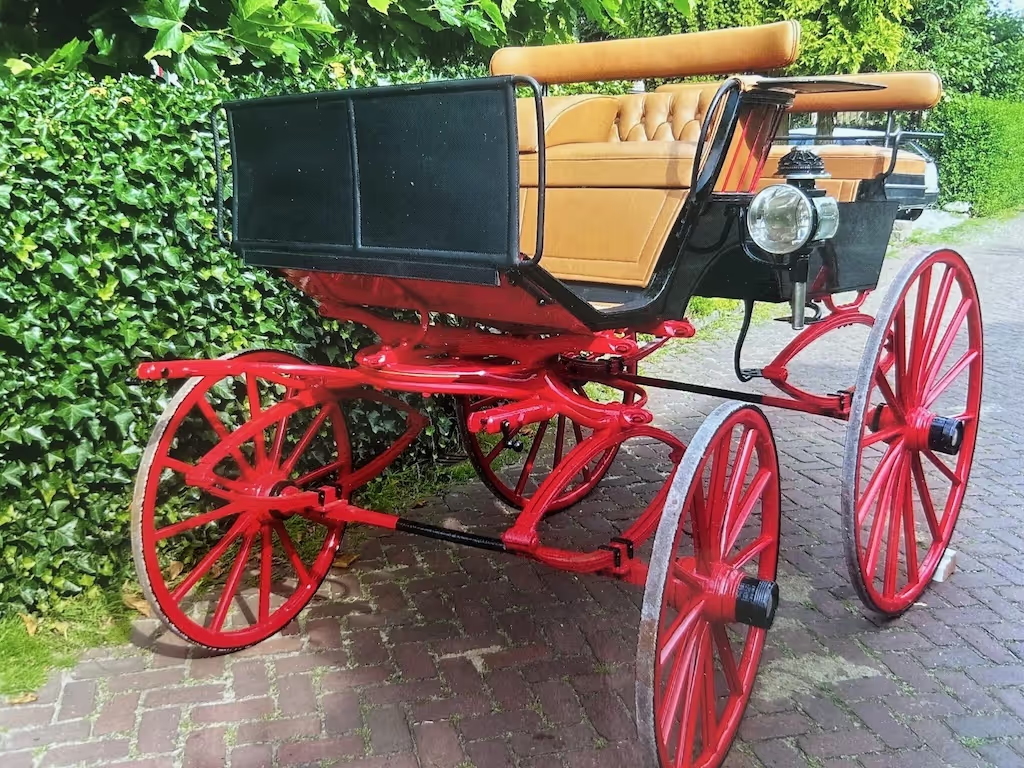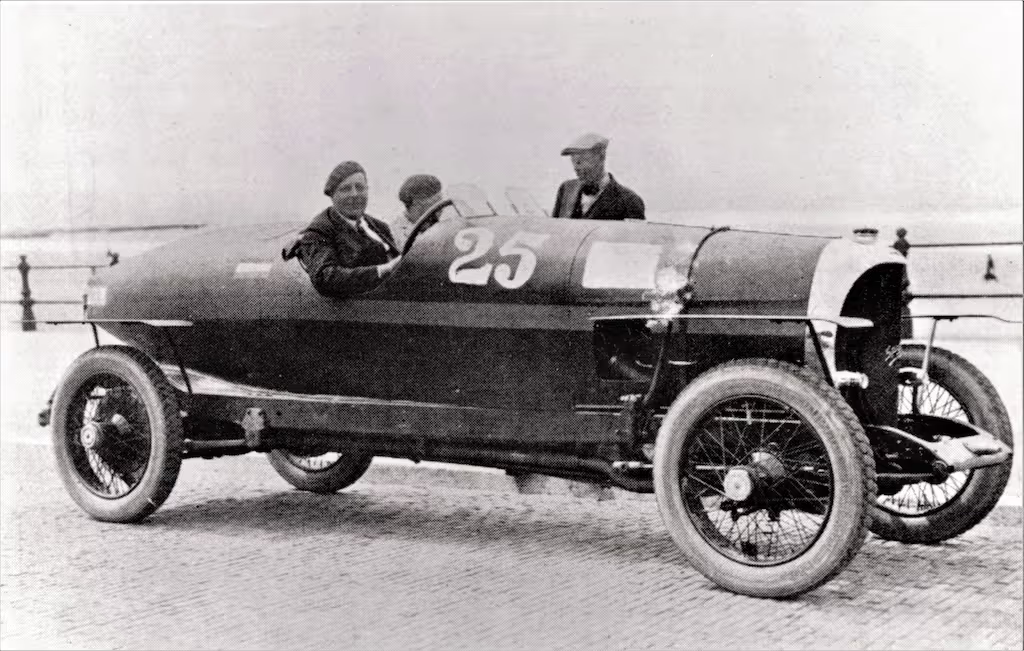Every Dutchman with a beating car heart knows the name Spyker. This fame comes from memories of old-timers from the distant past to the sports cars of the brand that rose from the ashes in 1999.
However, the origins of the name and the activities date back to 1880, when the ambitious brothers Hendrik-Jan and Jacobus Spijker from Hilversum took over their father's carriage shop and decided to produce quality carriages. That was a success, as Spijker's reputation grew rapidly. Eventually, their luxury carriages were even sold in the distant Dutch East Indies.

Less than twenty years after their inception, their fame reached a double milestone. In 1898, they not only received the honorable order to build the legendary Golden Coach, which in 1901 was the wedding gift from the people of Amsterdam for the then 21-year-old Queen Wilhelmina. Indeed, the brothers also focused on the new phenomenon: the automobile. With a luxurious body for a technically modified Benz, fitted with pneumatic tires, they entered the rapidly growing automotive market in 1898.
With great ambitions, they built the modern factory 'Trompenburg' on the Amsteldijk for the serial production of cars. For better readability in export countries, the brothers changed the spelling of Spijker to Spyker, with a Y. In 1903, Spyker presented a world premiere in Paris: the world's first car with a six-cylinder engine and four-wheel drive. A year later, all Spyker models became universally recognisable by a round radiator. The success was confirmed in 1907, when a Spyker participated in the monster trip from Beijing to Paris.

In the same period, disaster struck. Co-founder Hendrik-Jan Spijker drowned during a shipping disaster near Hoek van Holland, after which the factory went bankrupt. However, the good reputation was the reason for a quick restart with renewed technology and models. The Royal Stable Department ordered some luxury Spyker automobiles for Her Majesty and a new management even focused on aircraft construction.
With the high-quality C4, Spyker entered the most prestigious segment of the car market since 1920. However, that and even a world hour record at the English race track at Brooklands were no guarantee of success. In 1925, Trompenburg had to close the factory gates.

Memories of Spyker's glorious days, however, lived on. In 1999, they inspired businessman Victor Muller to rebirth the brand with an exotic super sports car. That project also did not reach the finish line. Nevertheless, the legacy of Jacobus and Hendrik-Jan Spijker, aircraft pioneer Henri Wijnmalen and Victor Muller justifies the celebration of Spyker's historic 145th anniversary in Mariënwaerdt.
At Wheels Mariënwaerdt 2025, Spyker enthusiast will show a unique collection of Spykers from the Victor Muller era:
- Spyker C8 Spyder #001 (first car from 2000)
- Spyker C8 Spyder #145
- Spyker C8 Laviolette #187
- Spyker C8 Spyder #210
- Spyker C8 Double 12S #101
In addition, there will also be a beautiful collection of classic Spykers:
- Spyker Coureuse #206 1895 (Carriage)
- Spyker Double Pheaton 15/22 1906
- Spyker Double Pheaton 20/28
- Spyker C1 Aerocoque 1919
- Spyker C4 Torpedo 1921


